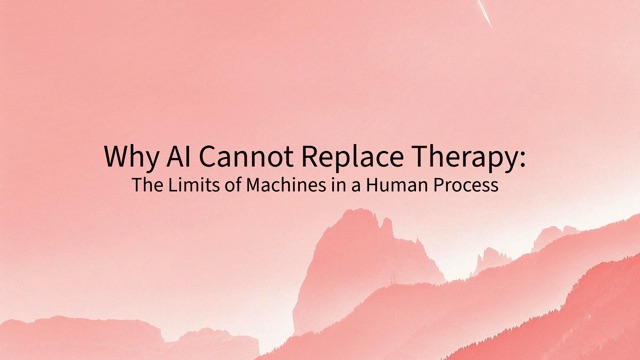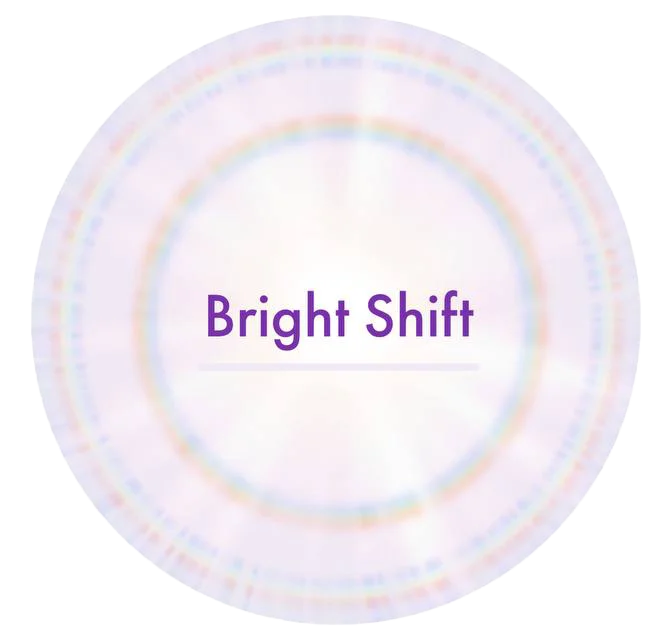Why AI Cannot Replace Therapy: The Limits of Machines in a Human Process

In an age where artificial intelligence can compose music, interpret legal documents, and even simulate human conversations, understanding why AI cannot replace therapy is crucial. While therapy often involves listening, problem-solving, and offering support—functions that AI, on the surface, seems capable of replicating—the true essence of therapy goes far beyond these capabilities.
But the truth is: therapy is not just about processing information. It is a deeply human, relational, and intuitive process that AI, no matter how advanced, cannot authentically replicate.
1. Therapy Is a Human Relationship, Not Just a Service
At the heart of therapy lies the therapeutic relationship, a safe, attuned, and nonjudgmental space co-created by two human beings. This relationship is not transactional; it is relational and often mirrors the client’s deeper interpersonal patterns. It is within this container of trust that healing occurs.
AI may be able to analyze speech patterns, detect emotional cues, or offer preprogrammed affirmations, and even solutions, but it cannot form real attachment bonds, nor can it offer the felt experience of being seen and understood by another conscious being.
2. Healing Requires Presence, Not Just Responses
Therapists do more than provide advice. They hold silence when needed, notice subtle shifts in posture, tone, or tears, and respond with emotional depth. They regulate their own nervous systems to co-regulate their clients’, modeling emotional safety and resilience.
AI can mimic presence with words, but it cannot embody presence. It lacks a nervous system, facial expressions, breath, and crucially, a soul. No algorithm can mirror the calming experience of sitting across from someone who is fully present with your pain.
3. Emotions Are Not Data
AI is exceptional at data processing, but emotions are not data points, they are lived experiences. A human therapist can feel a client’s sorrow in their own body. They can tolerate discomfort, sit with ambiguity, and recognize when something unspoken is hanging in the air.
AI can flag keywords that suggest sadness, but it cannot feel the sadness with you. It may recognize a crisis, but it won’t cry with you, laugh with you, or hold space for your silence.
4. The Unconscious Cannot Be Computed
Much of therapy, especially depth psychology, psychodynamic work, and trauma healing deals with the unconscious. Dreams, metaphors, archetypes, body memories, and symbolic language often point to truths that defy logic or clear interpretation.
AI, by nature, is literal and limited to what it has been trained on. It cannot access the symbolic and intuitive realms that a skilled therapist can navigate. Nor can it honor mystery, which is often central to the human psyche’s healing journey.
5. Ethics, Power, and the Risk of Misuse
Entrusting sensitive emotional and psychological matters to machines raises critical ethical concerns. Who owns the data? How is it protected? Can an AI discern when a client is being manipulative, in denial, or in danger? Who is accountable if something goes wrong?
Therapists are bound by ethical codes, confidentiality agreements, and years of training, not just in technique but in moral discernment and human development. AI operates on code and commercial interests.
6. Transformation Requires More Than Optimization
AI excels at optimization. Therapy, on the other hand, is about transformation. It invites people to confront their deepest fears, shed false identities, and reclaim lost parts of themselves. This is not a mechanical process,it is sacred, unpredictable, and often painful.
Healing doesn’t follow a script or protocol. Sometimes, what heals is not what is said, but what is witnessed. And witnessing is something only a human heart can truly offer.
Final Thought: AI as a Tool, Not a Therapist
AI can assist in therapeutic work, it can support therapists with data, suggest tools, or help clients track patterns between sessions. But it is just that: a tool. It cannot, and should not, replace the human soul-to-soul connection that lies at the heart of healing.
Some startups in the mental health space are pouring vast amounts of time, funding, and energy into building AI-powered tools, believing that scalable algorithms can replace human connection. While innovation has its place, these efforts often miss the essence of what therapy truly is. Reducing psychological healing to chatbots or emotion-detecting scripts risks trivializing the depth, nuance, and sacredness of the therapeutic process. Instead of advancing care, such ventures may end up offering superficial engagement that bypasses the real work of healing.
In a world increasingly shaped by machines, perhaps what therapy reminds us most is this: what makes us whole is not how fast we process
